These almond thumbprint cookies are melt-in-your-mouth tender and positively addicting.
They are made from buttery shortbread cookie dough that's rolled in roasted almonds, filled with jam or fruit preserves, and then drizzled with almond glaze. They are delicate and jewel like, and one of my all-time favorite cookies.
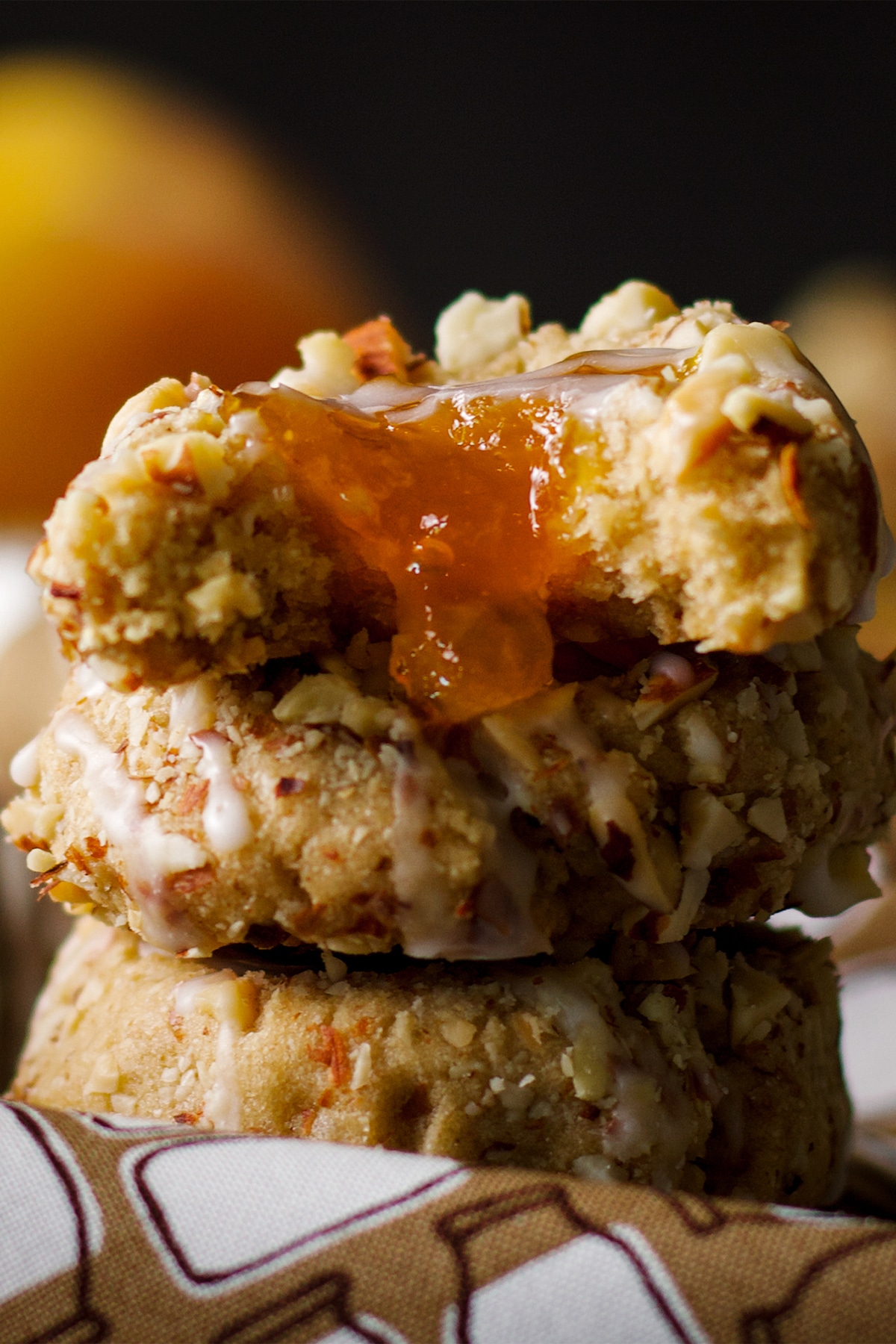
My Grandma was the undisputed Queen of Homemade Cookies. Grandma's cookies were a staple of my childhood that I largely took for granted. She always had several different kinds in the freezer and rare was the visit when she didn't pull some out for us to nibble on (ok... devour) while we talked.
Every Christmas, we all received a tin filled to bursting with several different kinds of small, bite-sized cookies. We all had our favorites. My kids loved her Pecan Sand Tarts with a chocolate kiss in the center.
I loved them all, but her jam filled thumbprint cookies were my favorite. They were tender, buttery and so pretty, with little dollops of jam in the center so that they glittered like jewels.
Jump to:

+ Subscribe to my newsletter for new and exclusive recipes in your in-box every month! As a full time traveler, living, working, cooking, and baking from a 5th wheel RV, it's also where I share our experiences of life on the road.
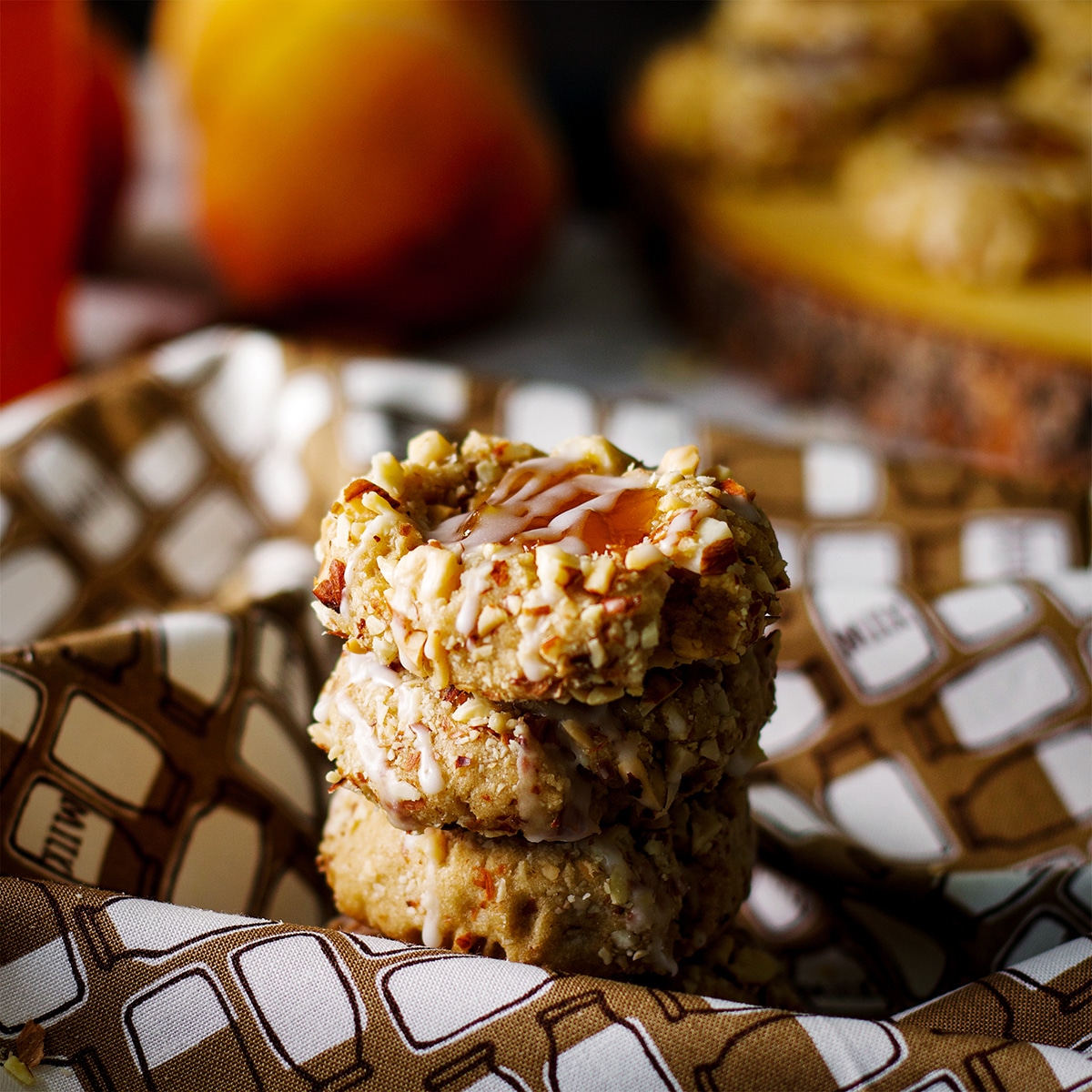
What Are Thumbprint Cookies?
Thumbprint cookies originated in Sweden, where they are called Hallongrotta, which is Swedish for "raspberry cave." Australia has a similar cookie, which they like to call "Jam Drops".
Here in the United States, they are called thumbprint cookies because they are made by pressing your thumb into little balls of cookie dough to create an impression that can be filled with jam, caramel, or chocolate. You can also fill them with citrusy fruit curd like in these lemon curd cookies.
Thumbprint cookies are usually made from shortbread dough, as they are in this recipe, which results in soft, tender cookies that are so buttery they practically melt in your mouth.
Ingredients Needed to Prepare this Recipe
- Whole raw almonds.
- Unsalted butter.
- Brown sugar, light or dark.
- Granulated sugar.
- Eggs.
- Pure vanilla extract.
- Almond extract.
- All-purpose flour, preferably unbleached.
- Whole wheat flour.
- Superfine almond flour keeps the texture of these cookies soft and tender. If your local market doesn't carry super fine almond flour, you can order it. I usually use Naked Almond Powdered Almonds. Or, process regular almond flour in a food processor along with ½ cup of the all-purpose flour and for a minute or two.
- Salt.
- Fruit jam or preserves. My two favorites are Peach Preserves and Strawberry Rhubarb Jam.
For maximum almond flavor in these thumbprint cookies, the dough includes almond flour and almond extract, and the cookies are rolled in chopped roasted almonds before baking. I love this for two reasons:
- The roasted almonds on the outside of the cookie give you an immediate burst of toasted nuttiness
- The almonds also add a nice contrast in texture - crunchy on the outside, tender buttery shortbread on the inside
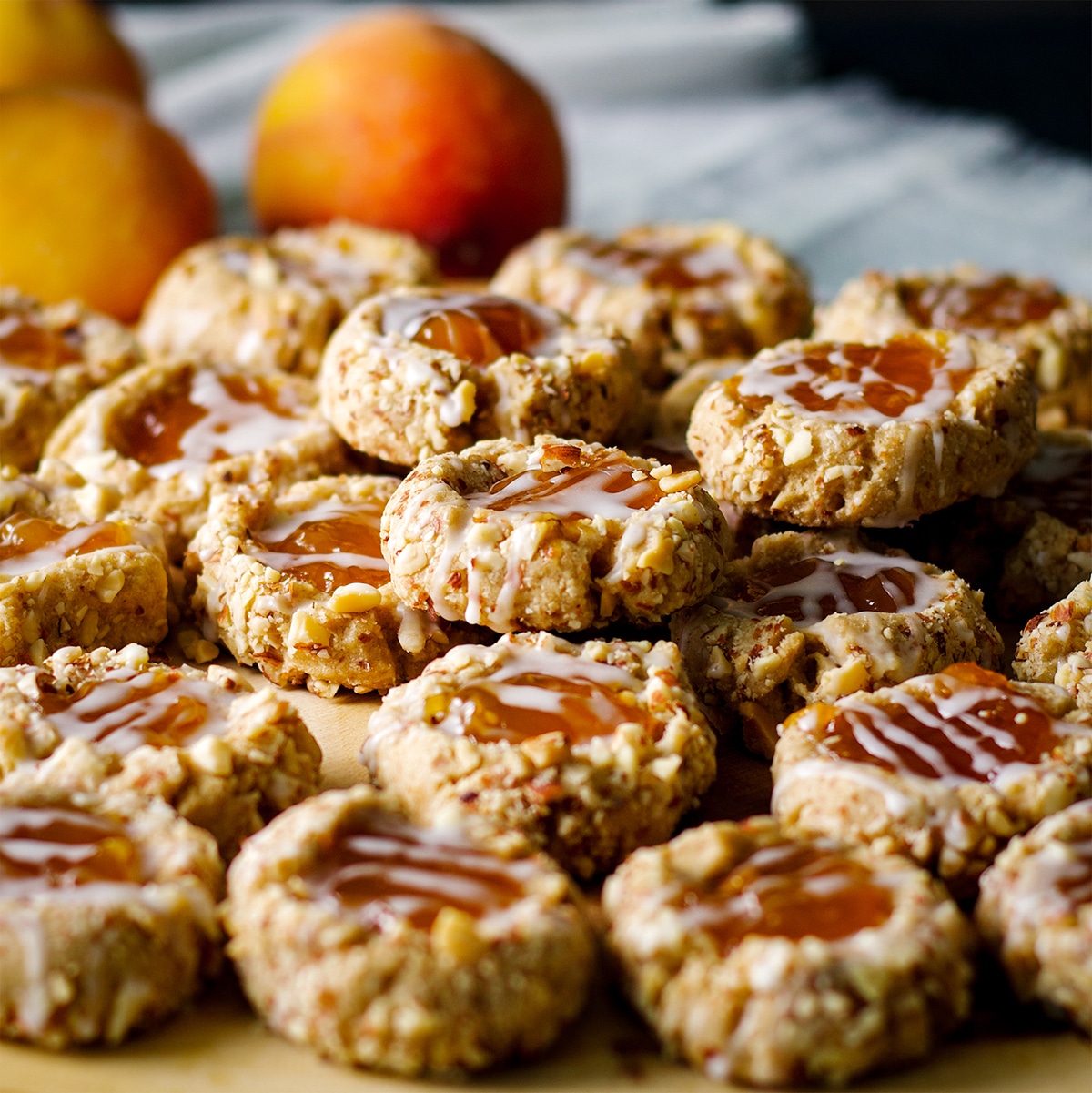
What Kind of Jam is Best for Thumbprint Cookies?
You can use any kind of jam or preserves you like in Thumbprint cookies. My grandma used several different kinds of jam when she made a batch of thumbprint cookies, and all the different colors looked so pretty.
The thumbprint cookies you see pictured here are filled with homemade peach preserves. They were baked in August, when Colorado peaches are in season, after having made several batches of preserves.
My other favorite thumbprint cookie filling is strawberry rhubarb jam, another summer staple that I make a point to make every year.
Aside from slathering homemade bread or buttermilk biscuits with peach preserves, these thumbprint cookies are my favorite way to use any kind of homemade jam.
But use any kind of jam or preserves you like to make these cookies. The only consideration is to choose a brand that's not thin or runny. The thicker and fruitier the better.
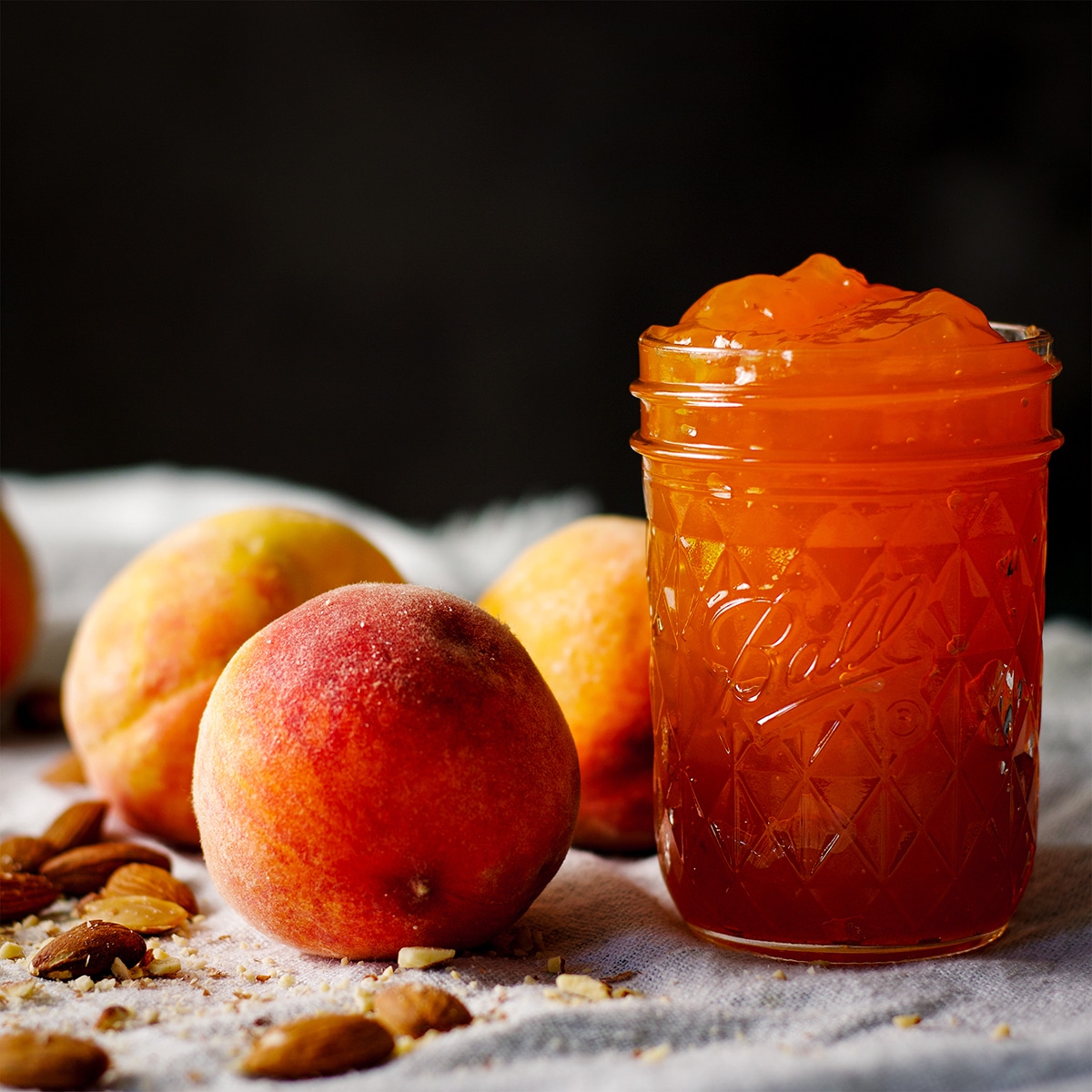
How to Make the Shortbread Cookie Dough
The dough for these cookies is a basic shortbread dough, which means there is a high percentage of butter to flour and no leavening, such as baking powder or baking soda.
In lieu of baking powder or baking soda, shortbread dough relies on air trapped in butter to keep the cookies from being overly heavy. The jagged surface of the sugar crystals digs into the butter as you beat them together. This creates tiny pockets of air trapped in the molecules of fat.
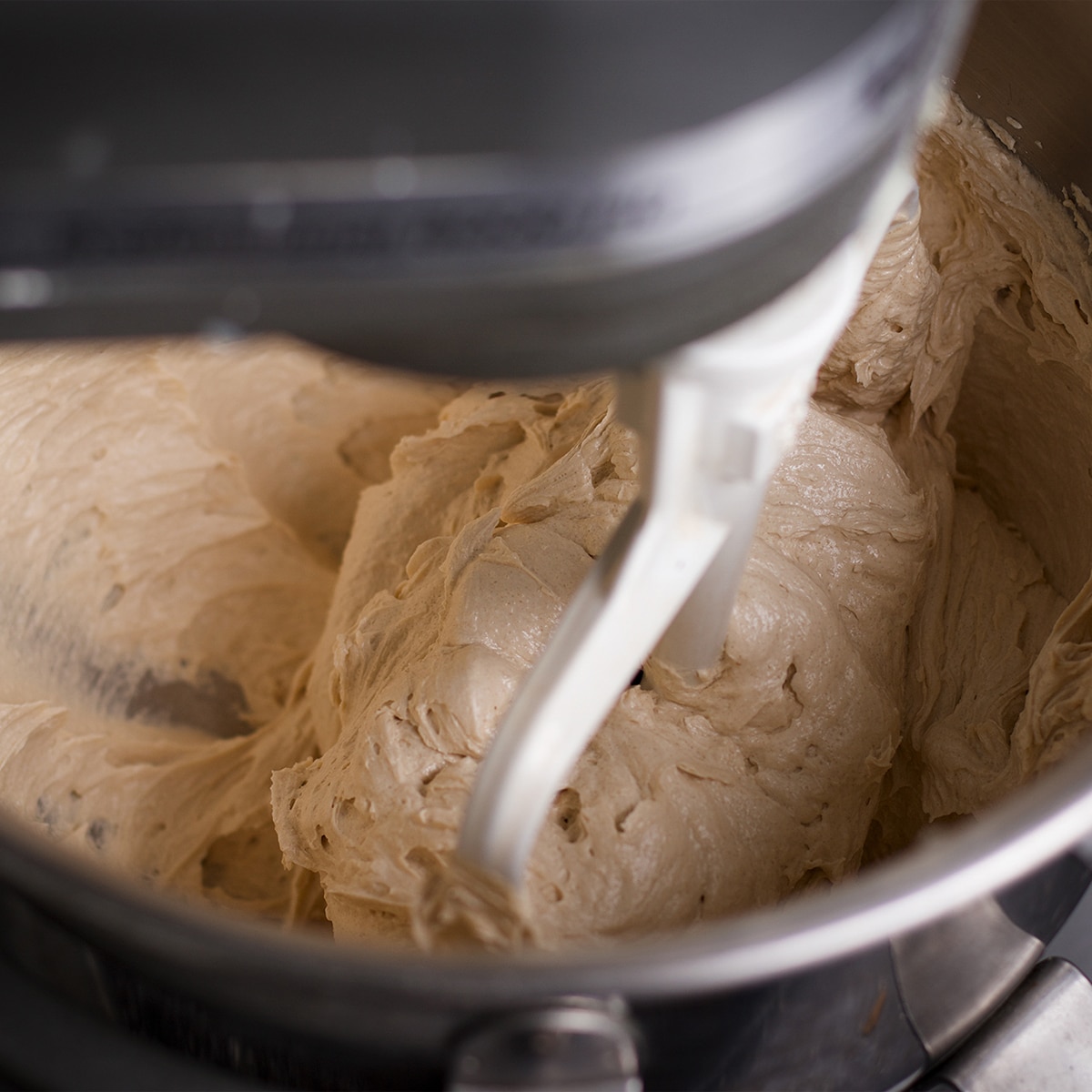
Beat the butter and both sugars with an electric mixer for several minutes until the mixture is light in color and visibly aerated. It will look almost fluffy.
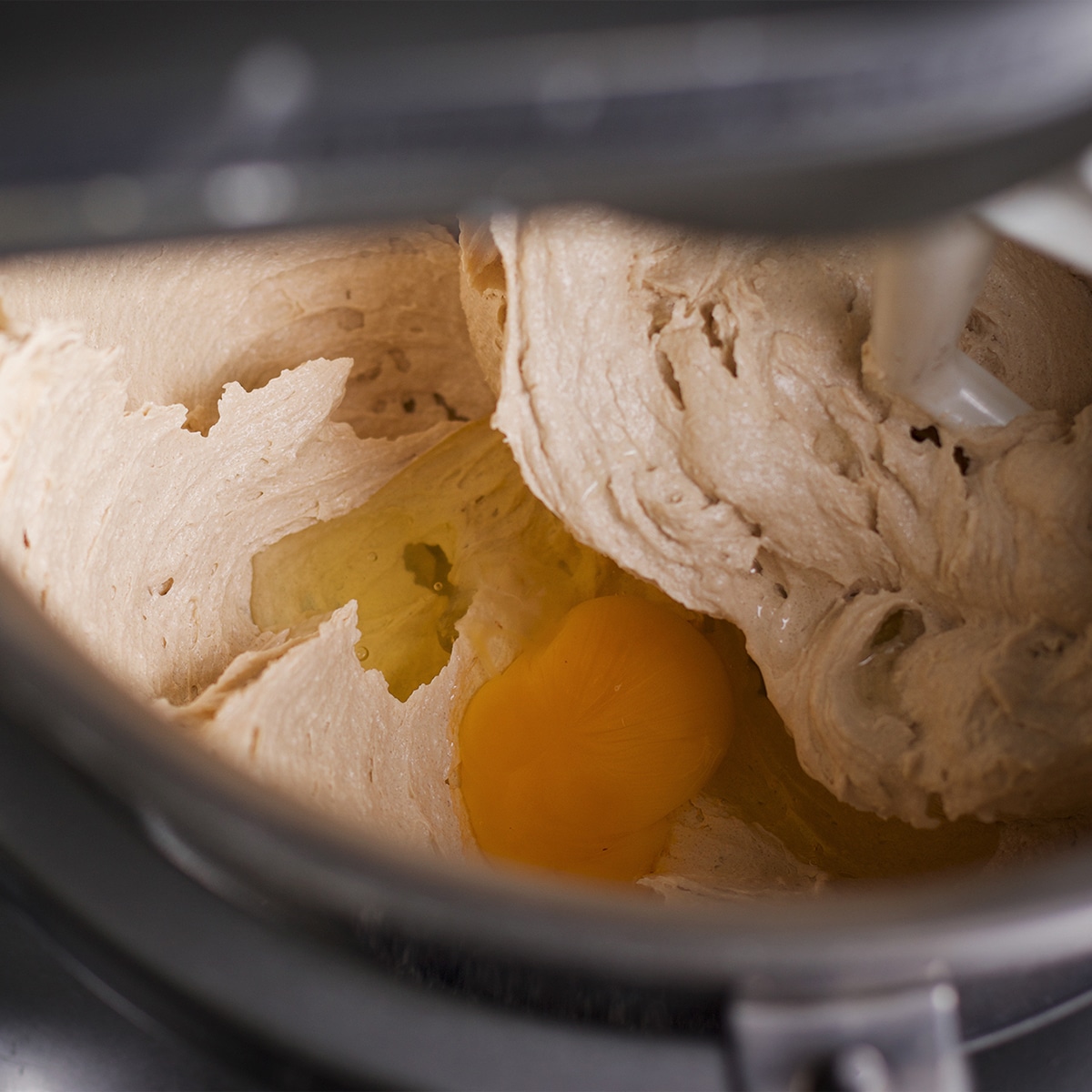
Add the egg, egg yolk, and the vanilla and almond extracts to the butter mixture and beat for a minute or so until it's well combined.
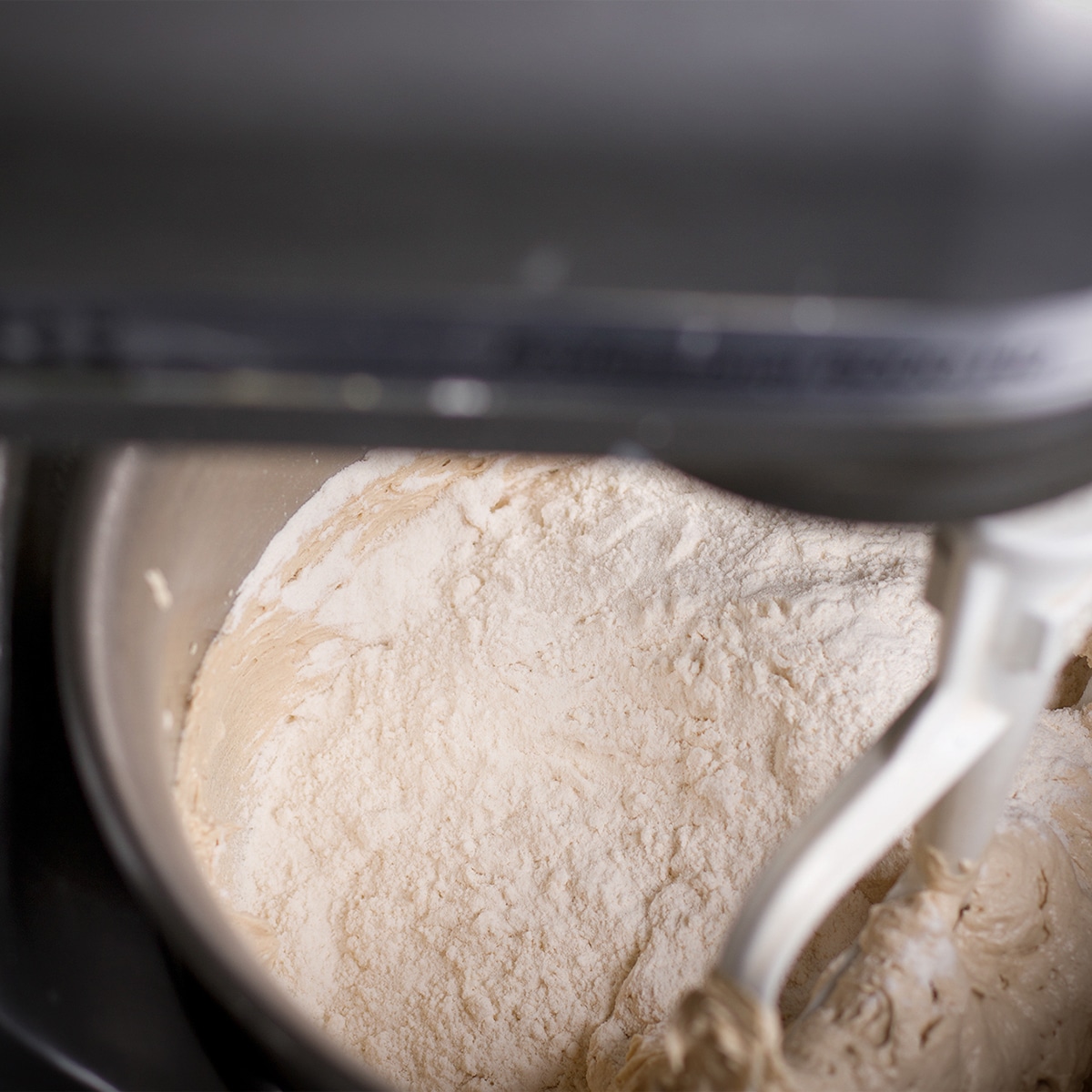
Add the all-purpose flour, whole wheat flour, and almond flour to the dough.
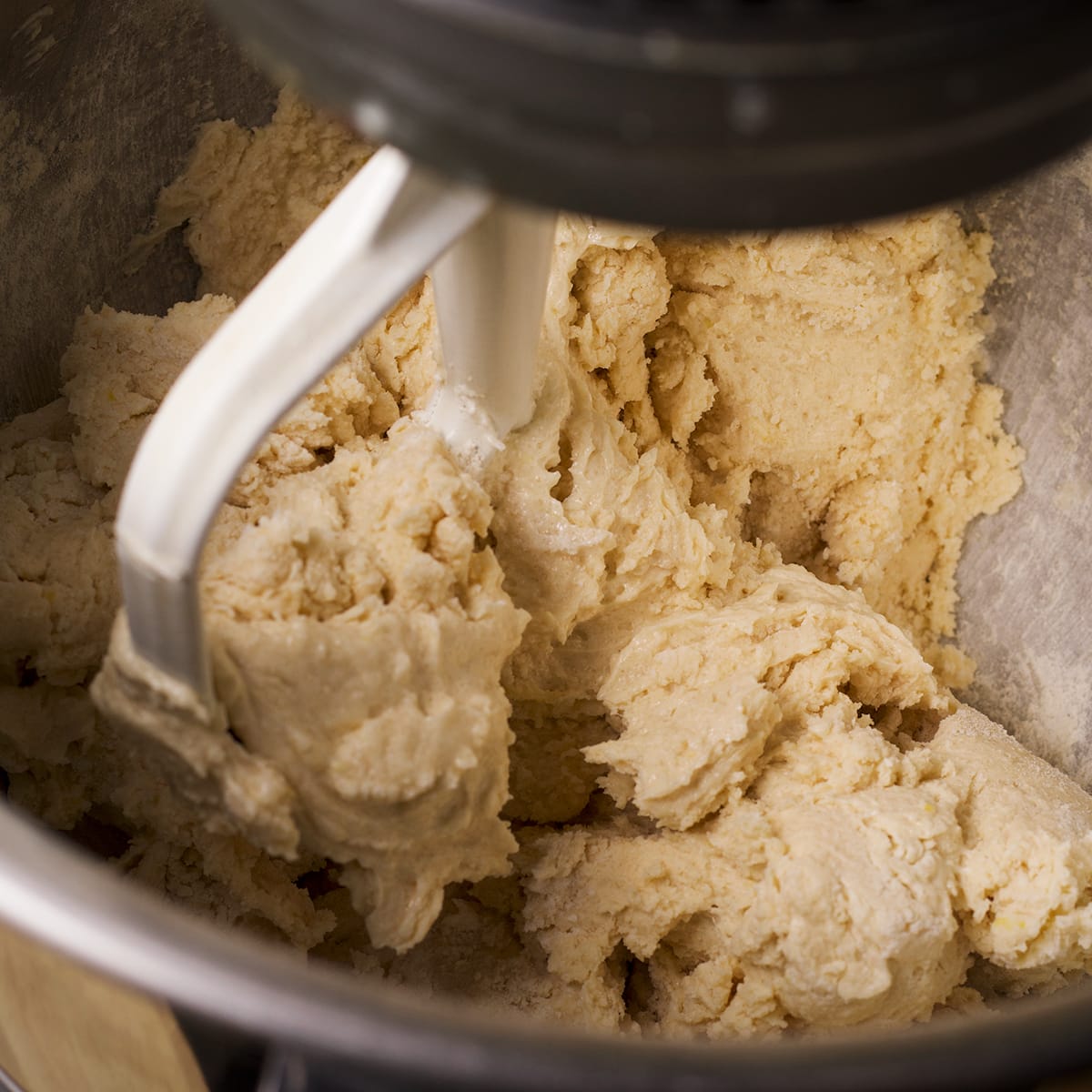
Mix on low just until everything is combined.
At this point the dough needs to be refrigerated for at least 2 hours and up to 3 days.
Do you absolutely HAVE to refrigerate this dough? Yes, you do. It's important to firm up all that butter again so that when the cookies bake they'll keep their cute little thumbprint shape. If the dough is warm, the butter will spread and leak out, resulting in cookies that are flat and greasy.
Pro tip: Once the flour has been added, it's important to mix gently, just until the ingredients are combined. Mixing flour into dough activates the gluten proteins that give baked goods their structure.
A little structure is good. But, over-mixing leads to cookies that are tough and dense - the opposite of the melt-in-your-mouth tenderness we want in a thumbprint cookie. So, stir gently.
While the dough is chilling out in the refrigerator, roast the almonds. Spread them out onto a baking sheet and roast them at about 375 degree F (190 degrees C) until they are darker in color and smell nutty. Set them out on the countertop so they can cool down. Once cool, pulse them a few times in a food processor until they are the consistency of coarse corn meal.
How to Shape and Fill Thumbprint Cookies
When the dough is well chilled, shape it into tablespoon size balls, then use your thumb to make an indentation in the center of each one. Dip the tops of the cookies in finely chopped roasted almonds and line them up on a parchment covered baking sheet.
Fill the little indentation in each cookie with a dollop of jam or preserves, and then bake!
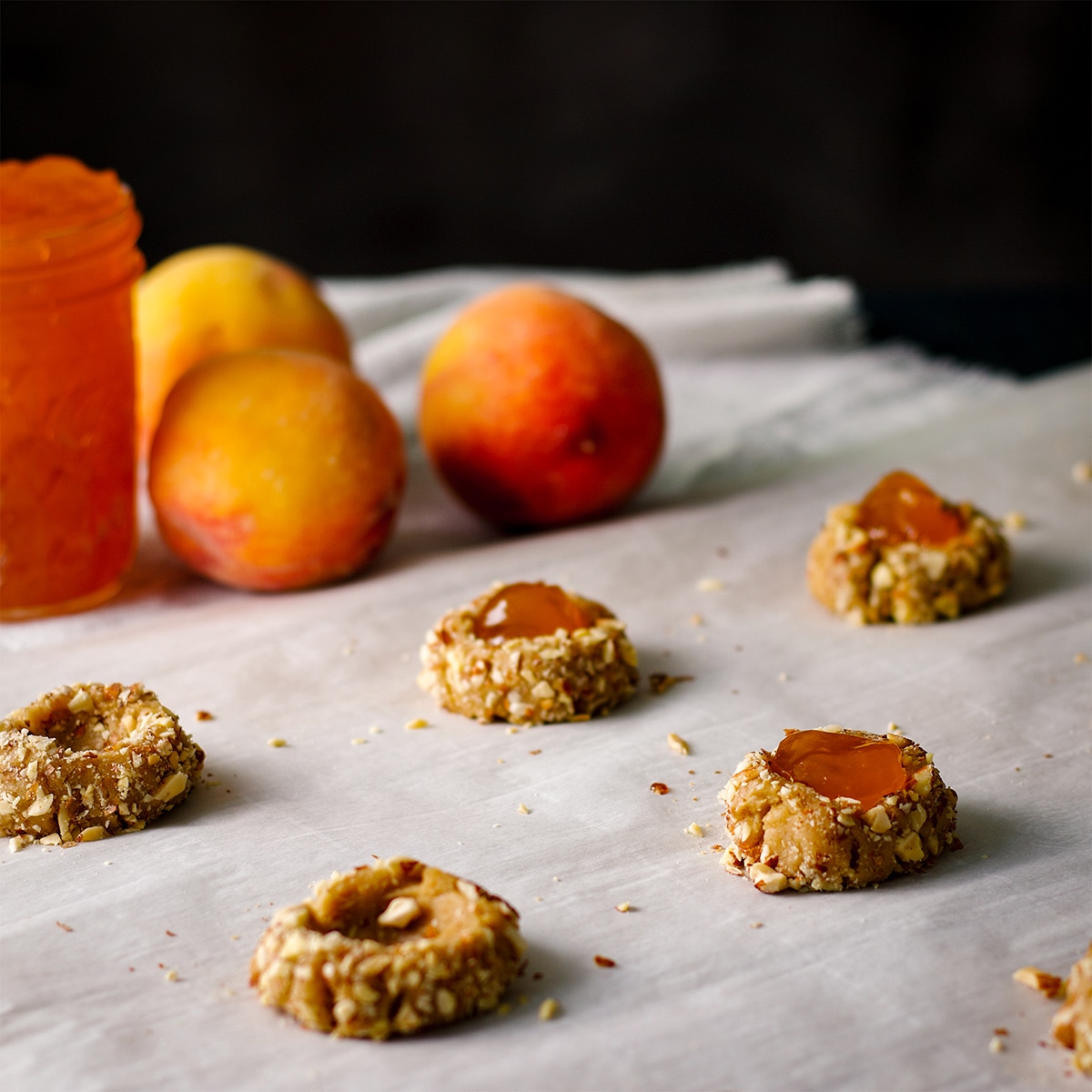

Let the cookies cool, then mix some powdered sugar, half and half, and almond extract together to make a glaze. Drizzle the cookies with the glaze and let them rest until the glaze has set.
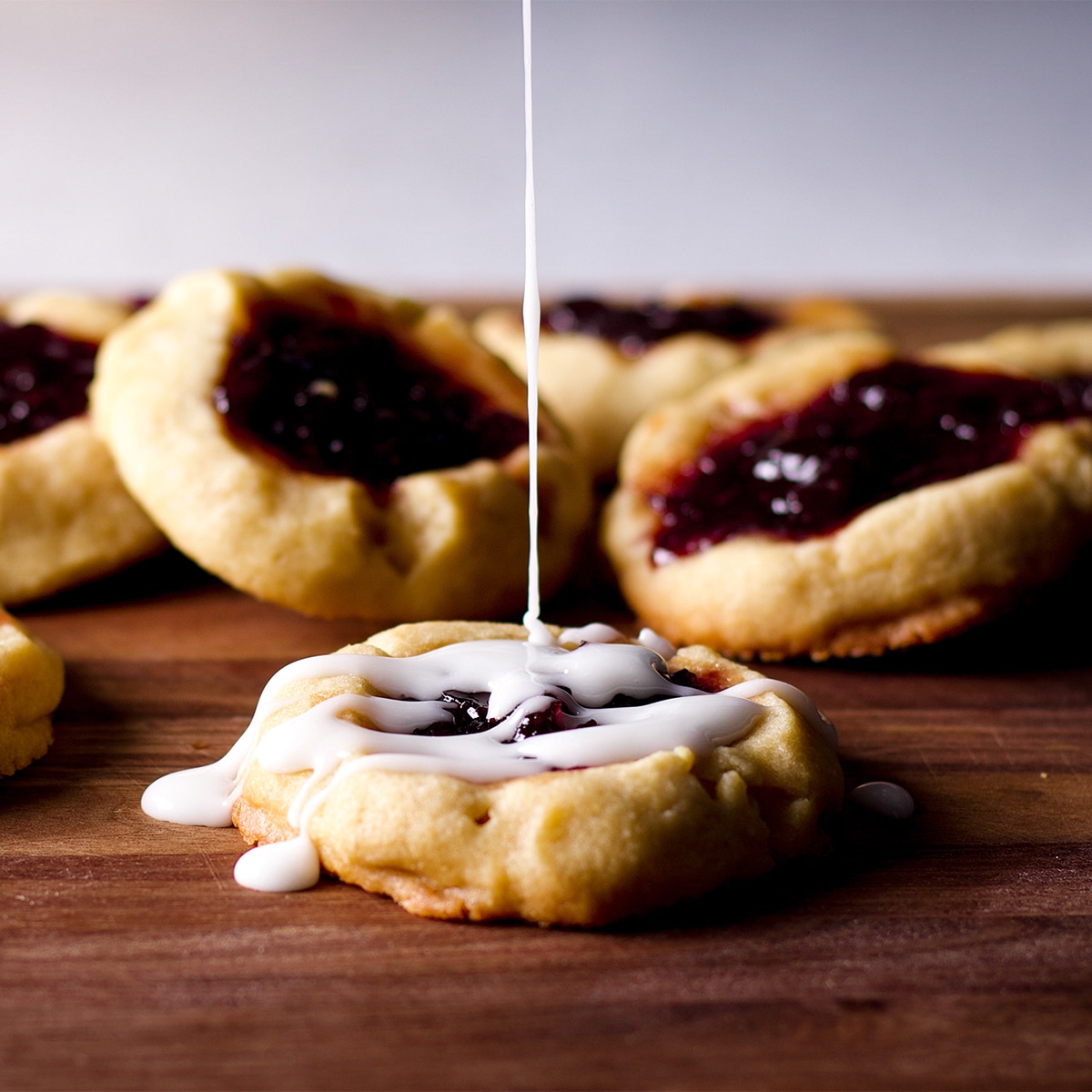
Or, don't let them rest, and do what we do in this house - eat them straight away.
How to Store These Cookies
These little thumbprint cookies can be stored in an airtight container at room temperature for up to 3 days, or in the refrigerator for up to 1 week. They will, in fact, last longer than this, but after three days they start to taste a little bit stale.
They can also be frozen for up to 3 months.
If you are keeping them in a container in which the cookies need to be stacked on top of each other, lay a piece of parchment paper between the layers of cookies to keep them from sticking together.
This is a Building Block Recipe
Building block recipes are tried-and-true recipes that I consider foundational to great home baking. They are the kind of recipes I come back to over and over again, sometimes baking them as is, but often using them as a jumping off point to create something new. > Scroll through all Building Block recipes.
I will say that as much as I love this recipe, they don't hold a candle to my Grandma's thumbprint cookies. How could they? They weren't baked by her.


+ Subscribe to my newsletter for new and exclusive recipes in your in-box every month! As a full time traveler, living, working, cooking, and baking from a 5th wheel RV, it's also where I share our experiences of life on the road.
If you give this recipe a try, let me know! Leave a comment, rate it, or take a picture and tag it #ofbatteranddough on Instagram.
Happy baking!
📖 Recipe

Almond Thumbprint Cookies
These almond thumbprint cookies are melt-in-your-mouth tender and positively addicting.
They are made from buttery shortbread cookie dough that's rolled in roasted almonds, filled with a fruit preserves, and drizzled with almond glaze. They are delicate and jewel like, and one of my all-time favorite cookies.
Ingredients
- 12 tablespoons butter (6 ounces/ 169 grams), at room temperature
- ¾ cup (159 grams) packed brown sugar
- ¼ cup + 2 tablespoons (74 grams) granulated sugar
- 1 large egg + 1 large egg yolk
- 1 teaspoon pure vanilla extract
- 1 teaspoon almond extract
- 2 ¾ cup (330 grams) all-purpose flour
- ¼ cup (28 grams) whole wheat flour
- ½ cup (48 grams) superfine almond flour
- 1 teaspoon salt
- 8 ounces jam or preserves (*See note)
- 1 cup (5ounces/ 142grams) whole almonds
For the Almond Glaze:
- 1 cup (113 grams) powdered (confectioners) sugar
- 1–2 tablespoons half-and-half or milk
- 1 teaspoon almond extract
Instructions
- Beat the butter and both sugars with an electric mixer on medium-high speed for about 4 minutes, scraping down the sides of the bowl a couple of times, until the mixture is light in color and so aerated it looks fluffy.
- Add the egg, egg yolk, and both extracts to the butter mixture and beat on medium speed for about 1 minute, until well combined.
- Add all-purpose flour, whole wheat flour, almond flour, and salt to the butter-egg mixture and mix on low speed just until the shortbread dough comes together. Cover the dough with plastic wrap and refrigerate for at least 2 hours or up to 3 days.
- In the meantime, spread the almonds out onto a baking sheet and roast for about 10 minutes in a 375 degree F (190 degrees C) oven, until darkened and fragrant smelling. Remove from the oven and set aside to cool. Once cool, add them to the bowl of a food processor and pulse until they are the consistency of coarse corn meal. Pour them into a small bowl.
- When you're ready to bake the cookies, heat the oven to 350 degrees F (176 degrees C). Line a couple of baking sheets with parchment paper and remove the shortbread dough from the refrigerator.
- Shape tablespoon-size pieces of dough into balls, make an indentation with your thumb in the center of each one, dip the tops in the ground almonds, and place them on the baking sheets, sparking them about 2 inches apart. Fill the indentation in each cookie with ½ – 1 teaspoon of jam or preserves.
- Bake for 14-16 minutes. When ready, the cookies will have small cracks in the tops and be set, but still soft. Let cool completely on the baking sheet.
- While they cool, make the glaze: Add the powdered sugar to a medium size bowl along with 1 tablespoon milk or half and half and the almond extract. Stir until the powdered sugar is completely dissolved. If too thick to drizzle from a spoon, add up to 1 more tablespoon of milk or half and half.
- Drizzle over cooled cookies.
- The cookies can be stored in an airtight container at room temperature for up to 3 days, or in the refrigerator for up to 1 week.
Notes
- If you can't find super fine ground almond flour at your local market, you can order it (find the link below). Or, simply put regular almond flour in a food processor along with ½ cup of the all-purpose flour and process for a minute or two.
- Use any kind of jam or preserves you like in these thumbprint cookies, but try to avoid jam that is overly thin or runny. My two favorite fillings to use: Homemade Peach Preserves and Strawberry Rhubarb Jam.
Recommended Products
As an Amazon Associate and member of other affiliate programs, I earn from qualifying purchases.
Nutrition Information:
Yield: 42 Serving Size: 1 cookieAmount Per Serving: Calories: 156Total Fat: 10gSaturated Fat: 5gTrans Fat: 0gUnsaturated Fat: 5gCholesterol: 33mgSodium: 190mgCarbohydrates: 15gFiber: 1gSugar: 7gProtein: 3g




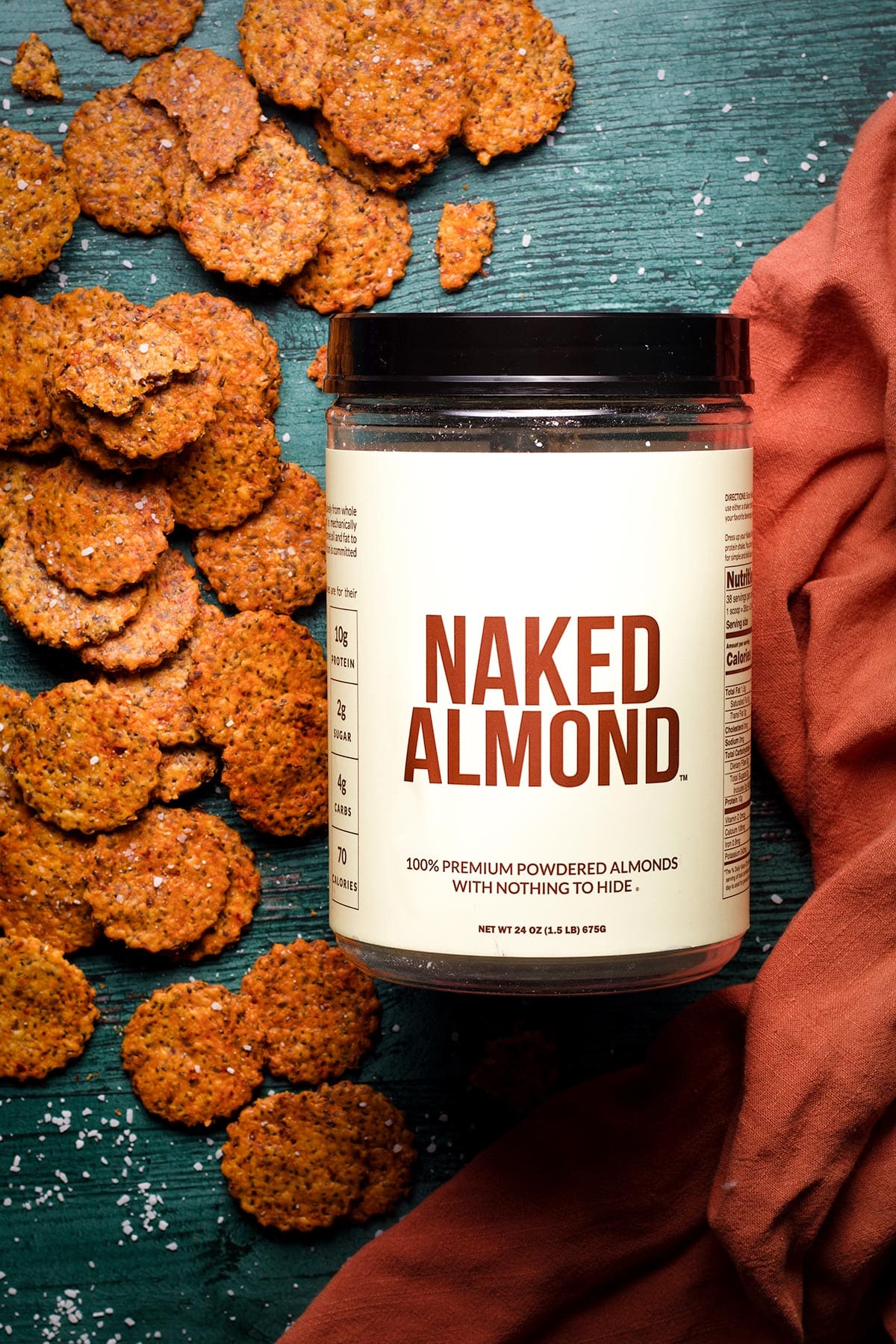






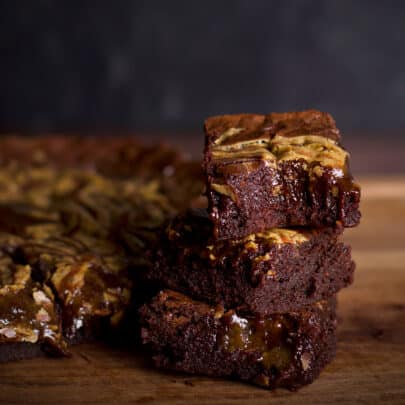
Suzanne says
Wowzas! I’m not much of a cookie person, but I could eat these ALL DAY! I made the peach jam and would eat that straight from the jar. These cookies went fast- my boss ate 4 in rapid succession. Even my son, who isn’t really into cookies, ate 2! I’ll definitely make these agin very soon!!
Rebecca Blackwell says
Hi Suzanne! I am so happy to hear that you (and your boss! and your son!) liked these cookies! Thank you so much for taking the time to let me know! And thank you for participating in the Bake Club! xo
Kristina says
Hi Rebecca, its Kristina again (the one that made the Fig newtons). 🙂
I made the batter for this recipe but it seems that is a buttery and not much workable. Do you think it should be that way or should I add flour or it will be better when it stays in the fridge one night and then I should use posh?
https://imgur.com/a/DD3y3mV
By the way I made double dose and I`m making the batter today and baking them tomorrow.
Rebecca Blackwell says
Hi Kristina! I'm so excited that you're making these! The dough does need to be refrigerated for at least a couple of hours - and overnight, as you're doing, will be even better. The butter can get super soft; putting it in the refrigerator will firm it up. I looked at the pictures you sent (thank you!), and the dough looks ok... although, I wish I could touch it to make sure! Tomorrow, I'd suggest baking 2 or 3 just to make sure there isn't a problem with the dough. If, for some reason, the dough doesn't hold its shape when baking, go ahead and add a bit more flour. But, I bet you'll be fine. Keep me posted?